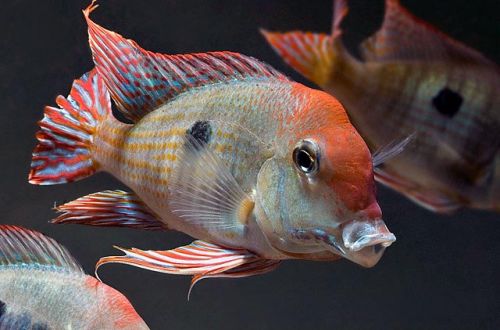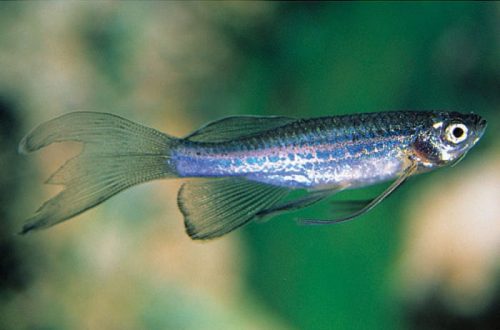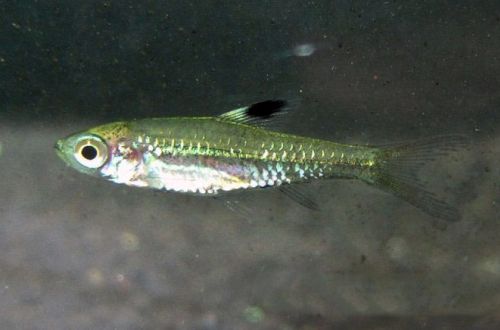
Rainbow Tami
Rainbow Tami, scientific name Glossolepis pseudoincisus, belongs to the family Melanotaeniidae (Rainbows). Endemic to the island of New Guinea. In nature, it is found only in one small lake near the Tami River, about 23 km southeast of the Indonesian city of Jayapura.

The fish was first discovered in 1954 during an expedition by the Dutch ichthyologist Marinus Boeseman. He brought many fish specimens, which added to the collection of the State Museum of Natural History in Leiden (Netherlands). However, Boezman did not have time to conduct a complete study of the brought samples. This work was done by Gerald Allen and Norbert Cross, who discovered 4 new species, one of which was Tami’s Rainbow, named after the river of the same name.
Description
Males with their bright red color resemble males of Atherina red, but differ in smaller sizes, growing up to only 8 cm. Females are even smaller – only about 6 cm, and greenish colors predominate in color. Horizontal zigzag orange-red lines run along the abdomen.
Behavior and Compatibility
Peaceful moving fish. Easily get along with other rainbowfish and other fish of comparable size and temperament. They prefer to be in a group of relatives.
Brief information:
- The volume of the aquarium – from 70 liters.
- Temperature – 22-25°C
- Value pH — 7.0–8.0
- Water hardness – medium (10-20 dGH)
- Substrate type – any
- Lighting – moderate
- Brackish water – no
- Water movement is weak
- The size of the fish is 6–8 cm.
- Meals – any
- Temperament – peaceful
- Keeping a flock of at least 6-8 individuals
Maintenance and care, arrangement of the aquarium
Optimal aquarium sizes start at 70–80 liters for a group of 6–8 individuals. In the design, it is recommended to use clusters of aquatic plants, located in such a way as to form places for shelters. At the same time, do not forget to leave places for open water for swimming. Otherwise, the design is selected at the discretion of the aquarist or based on the needs of other fish.
Comfortable conditions are considered to be warm water with a pH close to neutral with a GH of medium hardness. Gentle filtration must be ensured, avoiding the creation of a strong current.
Maintenance of the aquarium is standard and consists of several mandatory procedures. These include the weekly replacement of part of the water with fresh water, combined with the removal of organic waste, and the prevention of installed equipment.
Food
If the fish is raised in captivity, then it is likely that they are accustomed to most popular foods in dry, freeze-dried, frozen and live form. If the fish is caught in the wild, then the specifics of the diet should be clarified with the suppliers.





